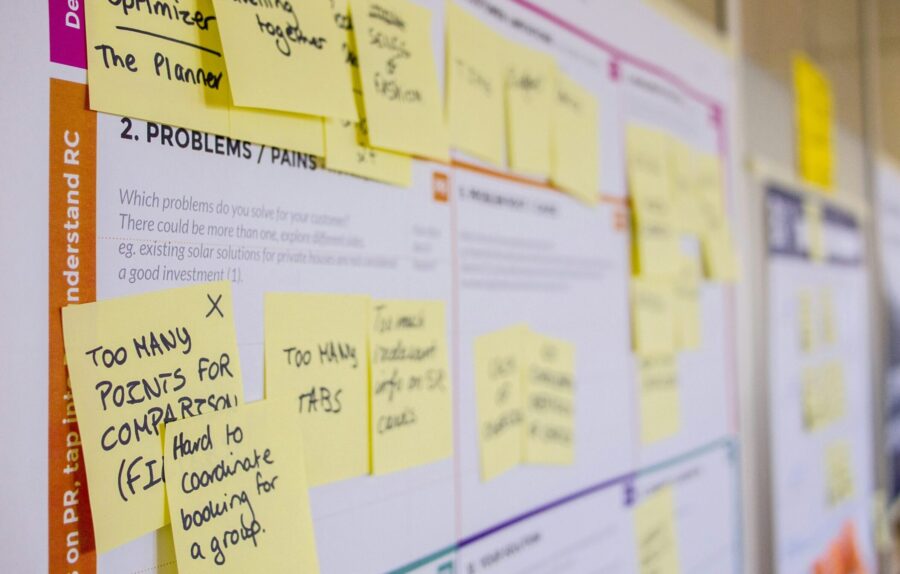If you work in project management we know you care about data, its relevance, its accuracy, its timeliness, and most importantly, how we can use it to make better business decisions.
To help you get a better idea of the current state of project management in 2024, we have researched and compiled a list of the most current project management stats to help you and your business.
PLEASE NOTE WE HAVE UPDATED THIS ARTICLE FOR 2025. Please read The State of Project Management 2025 to get the latest stats!
Project Management Software
When it comes to managing projects, the ubiquitous spreadsheet is still heavily used as a central project management tool. This is despite the fact that the data consistently tells us Excel causes Project Managers more problems than it solves.
Human error, corrupted files, security issues, version numbers, multiple files saved in multiple locations, data accuracy, and lack of control are some of the many, many reasons why Excel was not created to manage projects.
If you review the hundreds of project management reports and stats, like we’ve done, it’s not hard to make a clear correlation between the number of Project Managers using Excel, and the sheer number of projects failing.
However, there is some good news in 2024. We are finally starting to see a decrease in popularity for this not-built-for-project-management software solution. There has been a significant increase in organisations onboarding project management software solutions, with many others making it a priority for 2024.
- There has been an increase in the use of project management software with 36% of projects using it in 2023 as opposed to 11% in 2022.
- 37% of project portfolio managers said digital transformation is the biggest initiative for their business in 2024.
- Almost 90% of spreadsheets contain errors, yet the majority of projects are still run on the back of spreadsheets.
- Those utilising project management software and portfolio management software are twice as likely to be more aligned to business priorities.
- 93% of project managers think workflow automation is a priority, yet 79% report that less than half of their PPM workflows are automated.
- 49% of project professionals say automation and AI has had a positive impact on improving the efficiency and success of projects with only 6% saying it’s had a negative impact.
- KPMG research found that 56% of technology executives said the return from digital transformation investments exceeded their expectations.
Project Management and Project Controls
Lack of visibility remains a dominant issue affecting project management and project controls, causing sleepless nights for project managers. PMs are struggling to make accurate financial forecasts, assess project value, or even monitor their project baselines.
Not only that, but the lack of visibility and project centralisation means that hours are being wasted completing tasks that could be automated in minutes, rather than completed manually in hours or days.
- 16% of project managers say that visibility and reporting are their biggest challenges reflecting the continued reliance on spreadsheets and disparate systems in running projects.
- 50% of project practitioners said that effectively forecasting portfolio or project costs was the most challenging element of project financial management with 25% struggling the most with gathering accurate financial information.
- Over 50% experienced reduced process time as a key benefit of investing in project management tools and processes, followed by lower operating costs and fewer errors.
- A total of 70%+ organisations said they could gain access to the data they need and share valuable insights easily through investing in PPM tools.
- 50% of project professionals spend over a day manually collating project reports.
- 47% of project managers do not have access to real-time KPIs.
- PMI’s annual global survey found 21% of respondents were already using AI in the management of their projects
- By 2030, 80 percent of the work of today’s project management (PM) discipline will be eliminated as artificial intelligence (AI) takes on traditional PM functions such as data collection, tracking and reporting, reflecting the changing nature of the profession.
Project Performance
Project failure has become so prevalent in project management that there is overall more data available on failed projects and the reasons why, than on high-performing projects. Resource management, scope creep, and unrealistic deadlines are the most common challenges for project professionals.
When surveyed, project managers are increasingly crying out for better project management tools, that give them better control, consistency, visibility and accuracy. Yet despite the overwhelming data to suggest that PM’s need better (or more appropriate) tools and software solutions, change is slow.
- 77% of high-performing projects use project management software.
- 52% of project management professionals say resource management is their biggest challenge as they struggle to assign the right resources to the right projects at the right time.
- 11.4% of resources are wasted due to poor project management.
- 58% of project practitioners have had a project fail in the past year.
- Only 43% of projects are completed within budget.
- Only 34% of organisations mostly or always complete projects on time.
- 33% of project managers say the most common reason for project failure is scope creep or unrealistic deadlines.
Project Managers
At the cold face of the project is the project manager. Some see the role as little more than an administrative job, simply moving pieces along a timeline. Whereas the role of the project manager is invariably complex, which needs support from across the organisation.
The organisation’s role in helping to achieve project success is to empower the project manager by providing the necessary resources and supporting channels. For example, budget, the project team, c-level support, cross-departmental support and effective project management software.
The key findings from 2023 shows that there is still a large gender gap within the project management profession, and highlight the extreme demand for project managers.
- Male project managers outnumber female project managers at a rate of 3:1. However there is less of a gender gap in project management leadership positions as 23% of men versus 20% of women occupy a management role.
- 37% of women have an academic degree in project management versus 42% of men.
- Project professionals spend 46% of their professional development hours on technical skills and less than a third on soft skills like communication and strategic thinking.
- 2.3 million project managers will be needed each year to meet demand.
- People with PMP certification earn 16% more than those without it.
- Only about 20% of project managers report having extensive or good practical experience with AI tools and technologies, and 49% have little to no experience with or understanding of AI in the context of project management.
Project Management Teams
In 2024, there is continued growth in the number of project management professionals working remotely. This adds another layer of complexity to project management (and success) as cross-team collaboration is now no longer as simple as walking to the other side of the office. However, flexible working is extremely popular with project teams and has caused a shift with communication now being viewed as the most important skill reinforcing the increasing dominance of ‘soft skills’ or ‘power skills’.
The change in working culture reiterates the greater need for project management tools and software that support communication, centralisation, data-accuracy, visibility and control.
- 44% say communication is the top skill to have in the future reflecting the changing working culture with remote-working placing more importance on communicating clearly and quickly.
- There is a growing concern that there is a lack of skilled staff, 61% believe that this shortage will result in projects not being delivered successfully.
- Power skills (interpersonal skills or ‘soft’ skills) are proving increasingly important for project professionals. Organisations that highly prioritise power skills experience 12% less scope creep.
- Project professionals spend 46% of their personal development hours on technical skills and only 29% on power skills (e.g. communication, collaborative leadership and problem solving).
- 72% say flexible working is having a positive impact on projects
Sources
PMI Women in Project Management 2023
The PMO Outlook Report 2023 Edition
PMI Pulse of the Profession 2023
PMI Shaping the Future of Project Management with AI 2023
APM Salary and Market Trends Survey 2023
Wellingtone State of Project Management
KPMG Technology Survey Report 2023
About Proteus
Proteus developed by a Scottish-based tech company, Xergy Group, is an end-to-end project management solution developed for the energy and engineering consulting industries.
Proteus is industry-proven and enables consultancies to meet project demands across the full lifecycle, from proposal development to project delivery. With robust sales and project delivery modules, Proteus helps its customers win more business, increase efficiencies, manage expenditures, and improve project controls.
Critical workflows, automation, and controls are integrated into Proteus. These include opportunity evaluation, proposal building, resource planning, budget tracking and forecasting, real-time multi-level restricted dashboards, and project performance analytics.
Third-party integrations and customised solutions allow Proteus’ users, which include C-suite, project leads, and engineers, to get the exact software solution needed for their business.
We offer a free onboarding consultation service to ensure your company account is set up to your company’s needs.
How to get Proteus
Proteus operates under a software-as-a-service (SaaS) model. We offer Enterprise packages and flexible pricing solutions: contact our team to learn more.
We designed Proteus to be simple, and that means you can get up and running on Proteus without an IT team or support from a programmer. You will want to spend a bit of time configuring the admin console so that you have everything set up to suit your company structure, but it’s very intuitive and you don’t need a PhD in IT.
However, we want you to get the best out of what is a brilliantly powerful tool, so don’t hesitate to ask for our support. We have a team of product experts who are ready to help you with the configuration process, so get in touch today by filling out the form below:



